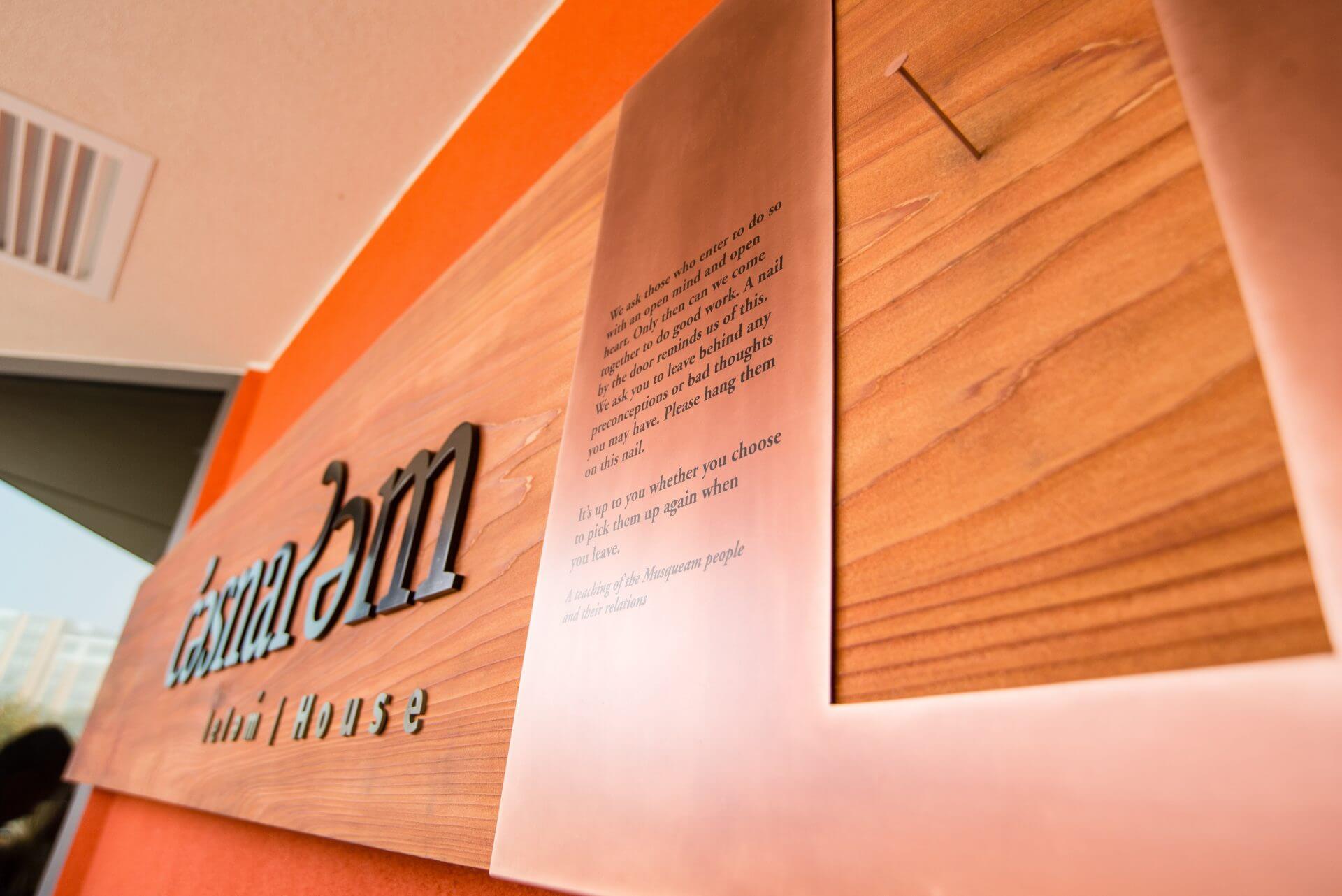
There are three houses at Totem Park student residence that were named by the Musqueam First Nation in hən̓q̓əmin̓əm̓, the Musqueam language:
c̓əsnaʔəm
q̓ələχən
həm̓ləsəm̓
What are the UBC building codes for these houses?
The UBC building codes are:
CSNM (c̓əsnaʔəm)
QLXN (q̓ələχən)
HMSM (həm̓ləsəm̓)
Please use the full house name rather than the UBC building code unless the code is required.
How do I type the Musqueam house names?
If you regularly need to type the names of these houses, here is how to type the special characters (c̓, ə,ʔ, q̓, χ, m̓) on a laptop or desktop computer.
- Switch to the First Nations keyboard layout. On most Windows operating systems, you will find the keyboard toggle button at the bottom of your screen. You can also change the keyboard layout in your keyboard preferences. If the First Nations keyboard layout isn’t installed on your computer, see the download instructions below.
- Use your default font. You can type these special characters using default system fonts like Arial, Times New Roman, Calibri, etc. in most Microsoft Office programs (e.g., Outlook, Word, Notepad). We recommend using Times New Roman! In some cases though, you may need to switch to the “First Nations Unicode” font. If it’s not installed on your computer, see the download instructions below.
- Use the following keyboard shortcuts for special characters.
c̓ rightAlt + c
ə rightAlt + 4
ʔ rightAlt + /
q̓ rightAlt + q
χ rightAlt + x
m̓ shift + rightAlt + m
To learn how to type additional special characters and symbols in hən̓q̓əmin̓əm̓, you can use the this chart.
Please note: if you’re on a mobile device, you may not be able to type the special characters. Instead, copy and paste the names from this page when you need to.
What are these special characters called?
c̓ is a glottalized c
ə is a schwa
ʔ is a glottal stop
q̓ is a glottalized q
χ is a chi
m̓ is a glottalized m
How do I download the First Nations Unicode keyboard layout and font package?
Residence front desks should already have the First Nations Unicode keyboard layout and font installed. If you are working on a computer that does not have them, you will need to download and install them.
The keyboard layout and font package includes detailed installation instructions. Be sure to follow the instructions in the package. If, for example, you install the font without also installing the keyboard layout, you will not be able to type the special characters.
The First Nations Unicode Font was developed by the UBC First Nations and Endangered Languages Program.
About the Musqueam language
Until the 1970s, the Musqueam language, hən̓q̓əmin̓əm̓, was only spoken and did not have a written component. Since then, the community has invested decades of commitment into documentation, research, and the development of teaching and learning resources. The Musqueam community formally adopted the North American Phonetic Alphabet (NAPA) because of its specialized symbols that are designed to be an accurate language documentation and teaching tool. Many indigenous communities around the world have similarly adopted alphabets based on the International Phonetic Alphabet to create written systems for their languages.
hən̓q̓əmin̓əm̓ contains 36 consonants. Twenty-two do not appear in English; some appear in only a handful of languages around the world.
Learn more about hən̓q̓əmin̓əm̓.
